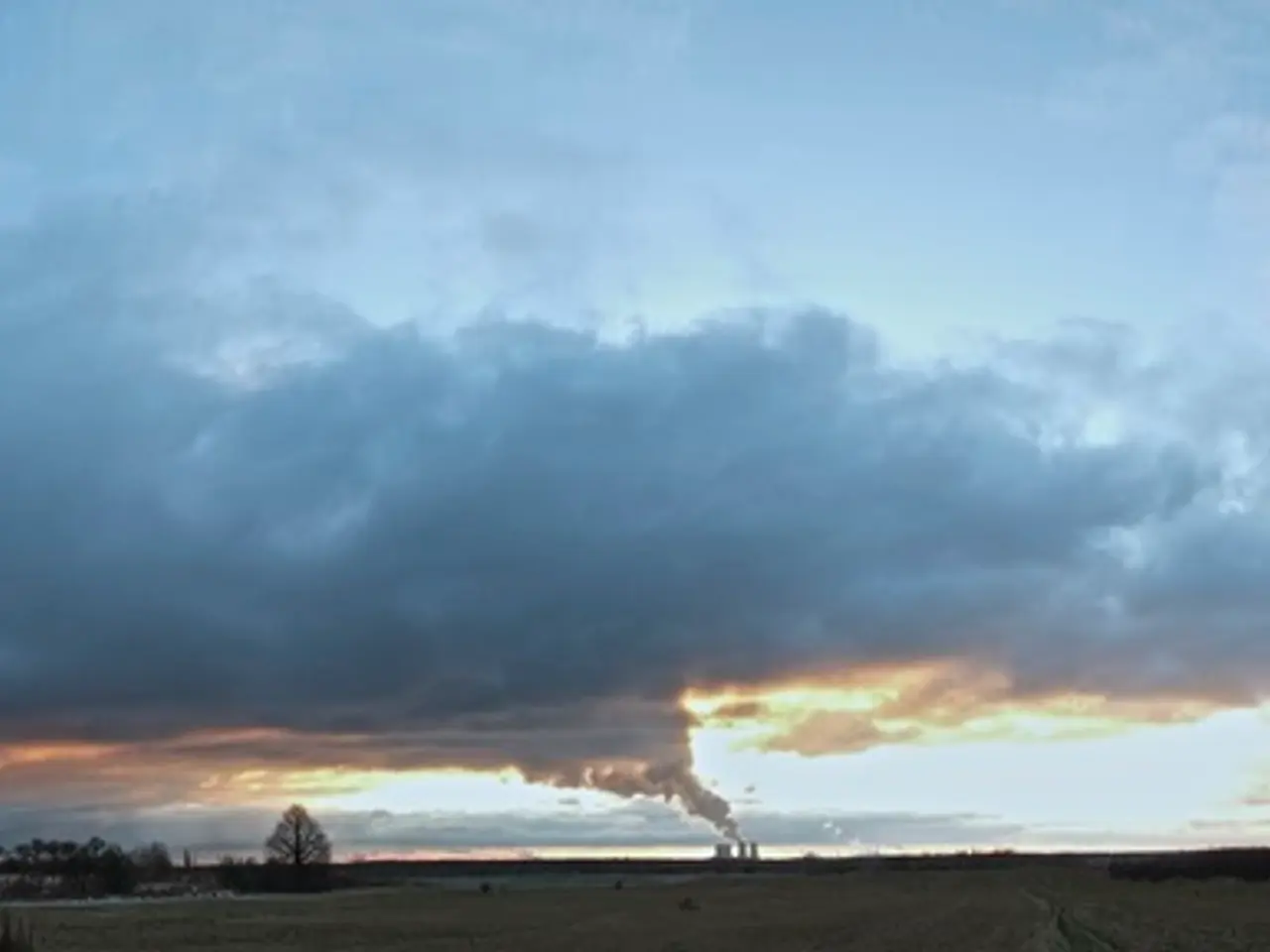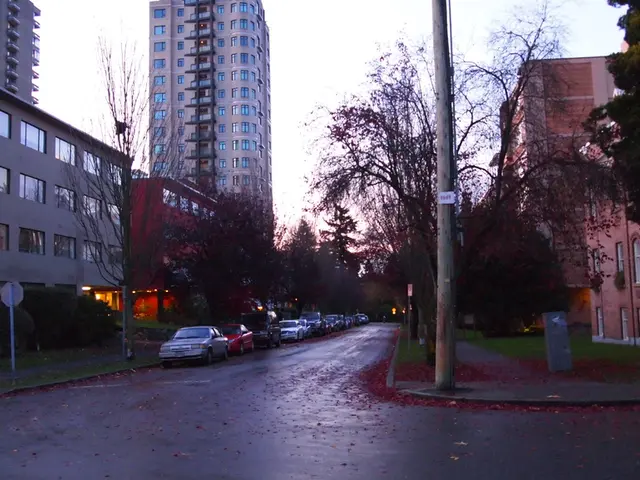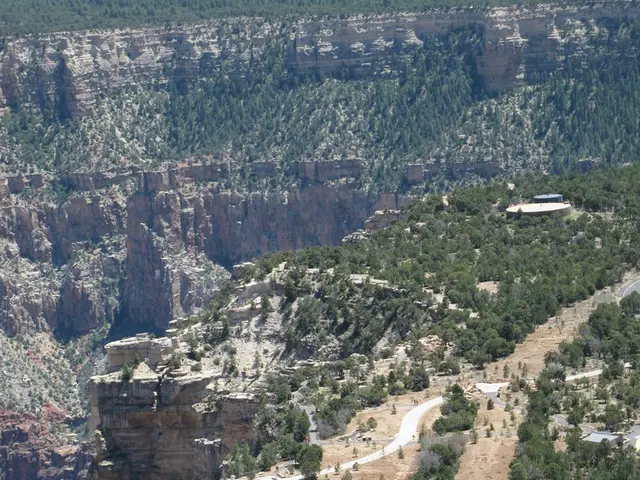Impact Assessment of Dust Across California Highlighted in New Report
California, known for its sunny beaches and lush vineyards, is also grappling with a lesser-known issue: dust storms. These natural events, which whip up from the state's arid regions during the winter and spring, have significant health, environmental, and economic impacts.
A recent study, "Beyond the Haze: A UC Dust Report on the Causes, Impacts, and Future of Dust Storms in California," highlights the rise of dust since California began to be extensively developed in the last century. The report, co-authored by researchers from UC San Diego, UC Davis, UC Berkeley, UCLA, and UC Irvine, predicts an expected increase in adverse health impacts due to dust in the San Joaquin Valley, including respiratory illness, heart disease, and deaths from Valley fever.
The health impacts of dust storms are particularly concerning. Dust particles, often very small and easily inhaled, can cause respiratory problems, especially for vulnerable populations such as those with asthma, chronic obstructive pulmonary disease (COPD), children, and older adults. Exposure to dust can trigger symptoms such as shortness of breath and worsen chronic respiratory conditions.
Moreover, dust storms contribute to overall air pollution, including harmful ozone levels linked to serious health issues such as asthma attacks and lung damage. The regions where dust storms occur in California encompass an area greater than 55,000 square miles, affecting nearly five million Californians, a population greater than nearly half of the states in the United States.
Environmentally, dust storms degrade air quality and reduce visibility, impacting air and ground transportation safety. They also affect agriculture by depositing dust on crops and soil, potentially damaging productivity. Furthermore, dust can reduce the efficiency of solar panels by coating surfaces, affecting renewable energy generation.
Economically, the health issues arising from dust exposure can increase healthcare costs and reduce workforce productivity due to illness. Transportation disruptions caused by poor visibility can delay goods and services, affecting the broader economy. Agricultural damage from dust deposition can lead to lower crop yields and economic losses for farmers.
To mitigate these impacts, the report suggests an integrated approach involving alert systems, healthcare readiness, environmental controls, and policy support. This includes continued use of air quality alerts to inform residents, especially vulnerable populations, about hazardous conditions and recommend limiting outdoor activities. Additionally, the report encourages healthcare providers and individuals to have action plans in place, including access to medications and protective equipment like masks during dust events.
Regional efforts to address dust sources, such as land management practices that reduce exposed soil, are also crucial in mitigating dust generation. Infrastructure adaptations, such as dust-resistant solar panel coatings and adjusted transit operations, can help minimize impacts in the transportation and energy sectors.
Lastly, supporting studies on dust storm trends and health impacts will inform evidence-based policies and interventions tailored to California's specific needs. For instance, California State Senator Steve Padilla authored Senate Bill 967 in 2024, requesting the University of California to develop a dust storm early warning system in Imperial County and the Coachella Valley.
In conclusion, an integrated approach involving alert systems, healthcare readiness, environmental controls, and policy support is essential for minimizing the adverse effects of dust storms and safeguarding California’s communities. Understanding and addressing the significant air quality challenges caused by dust pollution is crucial for the well-being of communities like the Imperial and Coachella Valleys.
- Science plays a vital role in understanding the causes and effects of dust storms, as demonstrated in the UC Dust Report.
- The report emphasizes the increase in dust accumulation since California's extensive development in the last century.
- The report predicts rising adverse health impacts, particularly in the San Joaquin Valley, including respiratory illness, heart disease, and Valley fever.
- Healthcare expenses and reduced workforce productivity due to illness are economic consequences of dust exposure.
- Transportation delays caused by poor visibility add to the broader economic impact.
- Agricultural damage from dust deposition leads to lower crop yields and economic losses for farmers.
- Air pollution, including harmful ozone levels, is a significant environmental issue associated with dust storms.
- Vulnerable populations, such as those with asthma, COPD, children, and older adults, are at higher risk during dust storms.
- The wide-reaching health impacts call for workplace-wellness initiatives, focusing on safety measures in the industry.
- Climate change may contribute to future dust storms, making it crucial to consider environmental science in addressing this issue.
- Ongoing research on dust storm trends and health impacts will lead to evidence-based policies and interventions.
- A dust storm early warning system in Imperial County and the Coachella Valley was proposed in Senate Bill 967, authored by California State Senator Steve Padilla in 2024.
- Policymakers should support studies on dust storm trends and health impacts to develop effective strategies for California.
- The retail sector can contribute to health-and-wellness by offering products such as masks during dust events.
- Entities in the real-estate sector should consider the potential dust-related health impacts when planning and developing new infrastructure.
- Financial institutions can help mitigate the economic impact by offering flexible financing options for affected farmers and businesses.
- Fitness-and-exercise and digital health platforms can recommend indoor activities instead of outdoor ones during dust events.
- Manufacturing companies can work on creating dust-resistant coatings for solar panels and infrastructure.
- Autoimmune disorders, some skin conditions, chronic-kidney-disease, and mental-health challenges might exacerbate the effects of dust storms.
- Hearing and eye-health professionals should advise their patients about protective measures during dust storms.
- Environmental-science and medical-conditions researchers can collaborate to investigate the links between dust storms and chronic diseases like COPD and Valley fever.
- Nutritionists and therapies-and-treatments specialists can advocate for dietary recommendations and stress management to boost overall immunity.
- Cybersecurity measures can help maintain communication and alert systems during dust storms.
- Employers can offer health insurance and Medicare coverage to help manage the health costs associated with dust storms.
- Lifestyle choices, such as staying informed about weather conditions and wearing appropriate clothing during dust storms, can help reduce dust exposure.
- Fashion-and-beauty brands can create stylish, functional protective masks for public use during dust storms.
- Food-and-drink establishments can offer specific menus for daily nutritional needs and encourage indoor dining during dust events.
- The stock-market, private-equity, venture-capital, and wealth-management sectors can invest in clean technology and sustainable solutions to mitigate the effects of dust storms and support the transition toward a cleaner, healthier environment.





